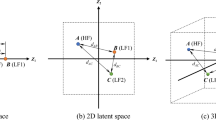Abstract
In this paper a fusion metamodeling approach is suggested as a method for reducing the experimental and computational effort generally required for calibrating the parameters of FEM simulations models. The metamodel is used inside an optimization routine for linking data coming from two different sources: simulations and experiments. The method is applied to a real problem: the optimal design of a metal foam filled tube to be used as an anti-intrusion bar in vehicles. The model is hierarchical, in the sense that one set of data (the experiments) is considered to be more reliable and it is labeled as “high-fidelity” and the other set (the simulations) is labeled as “low-fidelity”. In the proposed approach, Gaussian models are used to describe results of computer experiments because they are flexible and they can easily interpolate data coming from deterministic simulations. Since the results of experiments are obviously fully accurate, but aleatory, a second stage (“linkage”) model is used, which adjusts the prediction provided by the first model to more accurately represent the real experimental data. In the paper, the modeling and prediction ability of the method is first demonstrated and explained by means of artificially generated data and then applied to the optimization of foam filled tubular structures. The fusion metamodel yields comparable predictions (and optimal solution) if built over calibrated simulations vs. non-calibrated FEM models.











Similar content being viewed by others
References
Baghdasaryan L, Chen W, Buranathiti T, Cao J (2002) Model validation via uncertainty propagation using response surface models. In: Detc2002/dac-34140, pp 1–12
Do T, Fourment L, Laroussi M (2004) Sensitivity analysis and optimization algorithms for 3d forging process design. In: AIP Conference Proceedings 712, pp 2026–2031
Friedman L, Pressman I (1988) The metamodel in simulation analysis: Can it be trusted J Oper Res Soc 39(10):939–948
Harville D (1977) Maximum likelihood approaches to variance component estimation and to related problems. J. Am Stat Assoc 72:320–338
Hino R, Yoshida F, Toropov V (2006) Optimum blank design for sheet metal forming based on the interaction of high- and low-fidelity fe models. Arch Appl Mech 75:679–691
Huang D, Allen T, Notz W, Miller R (2006a) Sequential kriging optimization using multiple-fidelity evaluations. Struct Multidiscip Optim 32(5):369–382
Huang D, Allen T, Notz W, Zheng N (2006b) Global optimization of stochastic black-box systems via sequential kriging meta-models. J Glob Optim 34:441–466
Jones D, Schonlau D, Matthias Welch W (1998) Efficient global optimization of expensive black-box functions. J Glob Optim 13:455–492
Kennedy M, O’Hagan A (2000) Predicting the output from a complex computer code when fast apporximations are available. Biometrika 87:1–13
Mockus J, Tiesis V, Zilinskas A (1978) The application of bayesian methods for seeking the extremum. In: Towards Global Optimization
Pagani L (2011) Multisensor data fusion for quality inspection of free-form surfaces. Master’s thesis, Politecnico di Milano
Qian Z, Seepersad C, Joseph V, Allen J, Wu C (2006) Building surrogate models based on detailed and approximate simulations. ASME J Mech Des 128:668–677
Roux E, Bouchard P (2013) Kriging metamodel global optimization of clinching joining processes accounting for ductile damage. J Mater Process Technol 213(10):387–1047
Santner T, Williams B, Notz W (2003) The Design and Analysis of Computer Experiments. Springer Verlag
Shabenberger O, Gotway C (2005) Statistical Methods for Spatial Data Analysis. Chapman & Hall/CRC
Strano M, Mussi V, Monno M (2010) Non-conventional technologies for the manufacturing of anti-intrusion bars. Int J Mater Form 3:1111–1114
Sun G, Li G, Zhou S, Xu W, Yang X, Li Q (2010) Multi-fidelity optimization for sheet metal forming process. Struct Multidiscip Optim 44(1):111–124
Wagner T, Bröcker C, Saba N, Biermann D, Matzenmiller A, Steinhoff K (2011) Modelling of a thermomechanically coupled forming process based on functional outputs from a finite element analysis and from experimental measurements. ASTA-Adv Stat Anal 94(4):389–404
Wiebenga H, Boogaard A, Klaseboer G (2012) Sequential robust optimization of a v bending process using numerical simulations. Struct Multidiscip Optim 46:137–156
Xia H, Yu Din Y, Mallick B (2011) Bayesian hierarchical model for combining misaligned two resolution metrology data. IIE Trans 43:242–258
Yu B, Popplewell K (1994) Metamodels in manufacturing: a review. Int J Prod Res 32 (4):787–796
Yuen S, Nurick G (2008) The energy-absorbing characteristics of tubular structures with geometric and material modifications: An overview. Trans. ASME Appl Mech Rev 61:1–15
Zarei H, Kroger M (2008) Bending behavior of empty and foam-filled beams: Structural optimization. Int J Impact Eng 35:521– 529
Zsolt U, Lasdon L, Plummer J, Glover F, Kelly J, Martí R (2007) Scatter search and local nlp solvers: A multistart framework for global optimization. J Comput 19:328–340
Author information
Authors and Affiliations
Corresponding author
Rights and permissions
About this article
Cite this article
Colosimo, B.M., Pagani, L. & Strano, M. Reduction of calibration effort in FEM-based optimization via numerical and experimental data fusion. Struct Multidisc Optim 51, 463–478 (2015). https://doi.org/10.1007/s00158-014-1149-0
Received:
Revised:
Accepted:
Published:
Issue Date:
DOI: https://doi.org/10.1007/s00158-014-1149-0




